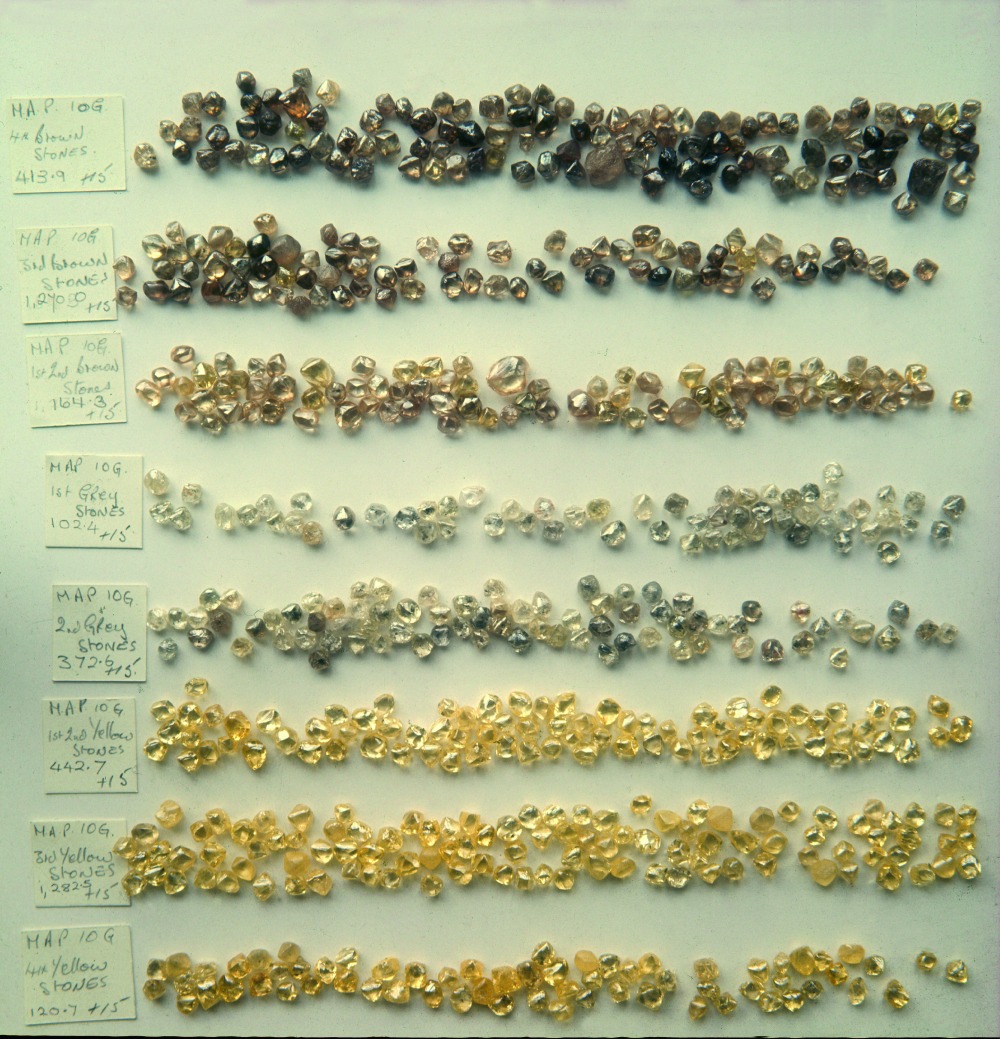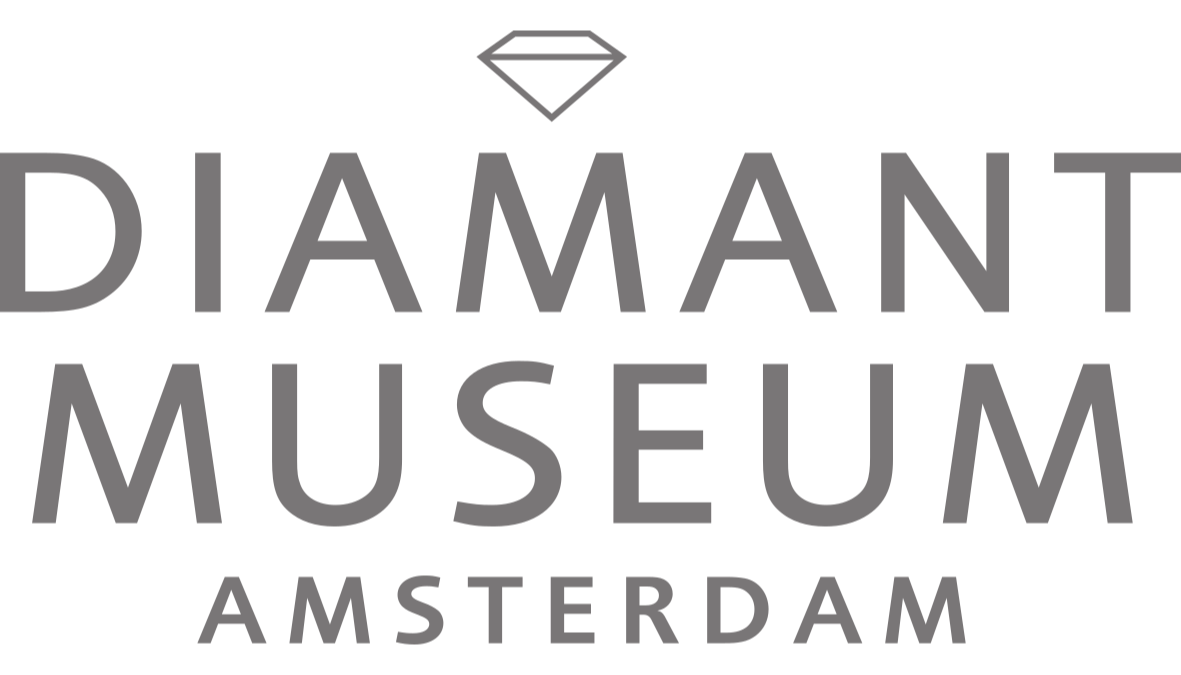Trade & Distribution: Diamond Trading Company
The conglomerate of mining companies was established in 1888 and which operates under the name De Beers has dominated the South African diamond industry since 1929. It is the largest diamond company in the world, with 20 mines in a number of African countries, together amounting to more than 40% of the world production of diamonds (measured in value). It also collaborates with companies in Russia and Canada.
One part of De Beers is the Diamond Trading Company (DTC), the ‘Syndicate’, which controls over 45% of the world trade in rough diamonds. Because of this market position, prices can be kept stable, which is of great importance both for the producers, the wholesalers and diamond dealers, but also for private buyers. The producers not represented by the DTC, those who sell freely (Ghana, Brazil, Venezuela), profit from this stability. The total size of the world trade in rough diamonds was estimated at 17.5 billion USD in 2018. Aside from trade and distribution, the DTC (until 2000 known as the Central Seiling Organization (CSO)), also engages in diamond-related marketing and promotion. The campaign ‘ a diamond is forever’, which began in 1947, is renowned.


DIAMOND TRADING COMPANY (DTC)
One part of De Beers is the Diamond Trading Company (DTC), the ‘Syndicate’, which controls over 45% of the world trade in rough diamonds. Because of this market position, prices can be kept stable, which is of great importance both for the producers, the wholesalers and diamond dealers, but also for private buyers. The producers not represented by the DTC, those which sell freely (Ghana, Brazil, Venezuela), profit from this stability. The total size of the world trade in rough diamonds was estimated at 17.5 billion USD in 2018. Aside from trade and distribution, the DTC (until 2000 known as the Central Selling Organisation (CSO)), also engages in diamond-related marketing and promotion. The campaign ‘a diamond is forever’, which began in 1947, is renowned. Other large producers of Diamonds are Alrosa (Russian), BHP Billiton Diamonds (Canadian) en Rio Tinto (British/Australian). Cecil John Rhodes (1853 - 1902), founder of the De Beers Mining Company. (De Beers Archives)

Shares
On 18th July 1889, Cecil Rhodes bought all shares in Kimberley Central, the company of his great competitor Barney Barnato, for a record amount of 5,338,650 pounds Sterling. (De Beer Archives)

Kimberly mine
Map dating from 1883, showing all ‘holdings’ in the Kimberley mine. (De Beer Archives)

Diamond mining
Around 1870, diamond extraction began in Kimberley, with hundreds of adjoining claims 30 feet in size, which, soon enough, were only reachable by cable-lifts. (De Beers Archives)

South African Finsch mine
The South African Finch mine, owned by De Beers, is one of the largest in the world. (De Beers Archives)

Sir Ernest Oppenheimer
Sir Ernest Oppenheimer (1880 - 1957), the man who made De Beers great, started in 1902 as a diamond sorter in Kimberley, in 1926 he became a director, and, several years later, president of De Beers Consolidated Mines. In 1933 he established the Diamond Trading Company, with which De Beers came to dominate both diamond mining and sales worldwide. (De Beers Archives)

Zeppelin
For purposes of surveying for new diamond fields, De Beers makes use of an airship. (Photo Bas Czerwinski, 2007)

Trade and Distribution
The DTC uses a system in which a limited number of strictly controlled diamond dealers (in 2005 there were 93 of them) have a right to the purchase of diamonds. These are the so-called ‘sightholders’ (the firm of Moppes was the last sight-holder in the Netherlands, up until 1976). The sightholders are divided into ‘manufacturers’ who polished the rough stones themselves and are not allowed to sell them on, and the ‘dealers’ who sell on the rough stone to regular customers. The diamonds are sorted by weight, colour, purity and shape into more than 16,000 categories. Packets of the sorted diamonds are put together, called a ‘sight’. The DTC decides on the value, and offers the sight to the sight-holders ten times a year. The contents may be inspected. There is some room for negotiation about the composition. Beyond that, one must trust that the stated value is correct. Delivery follows receipt of payment. Rough and cut diamonds are traded via the diamond markets or directly from the offices. The large stones are traded individually. The smaller stones go in lots. A lot is an amount of stones of different quality packed in a ‘parcel paper’. The sale is confirmed with a handshake, while saying ‘mazzel en broche’, Hebrew for ‘luck and blessings’. Important markets are located in Antwerp, New York, Tel Aviv, Johannesburg and Mumbai, among other places.

Rough Diamond
Rough diamonds are sorted by colour and weight into more than 16,000 categories. (De Beers Archives)

Diamond Bourse of Antwerp
The great hall of the Diamond Bourse of Antwerp, the most important trading centre for rough and polished diamonds in the world. (De Beers Archives)

‘Blood-’ or illegal diamonds
Apart from the official diamond trade, there also exists a circuit of diamonds from illegal sources, the so-called blood or conflict diamonds. With the proceeds, civil wars have been and sometimes are waged, for example in countries such as: Liberia, Sierra Leone, the Democratic Republic of Congo, and Angola. In December 2002, an international treaty was drawn up to counteract this trade, the Kimberley Process Certification Scheme. The participating countries (45 in 2005) pledge that they will trade in rough diamonds exclusively with other participating countries. Since 2003, the scale of the trade in illegal diamonds has declined from 4% (although some mention 15%), to less than 1% of the total world trade in diamonds. Photo: Non-state-controlled diamond extraction occurs in various African countries such as Liberia, Sierra Leone, Angola (photos). To counteract the trade in these illegal diamonds, most countries have combined together in the Kimberley Process (December 2002). (De Beers Archives).

